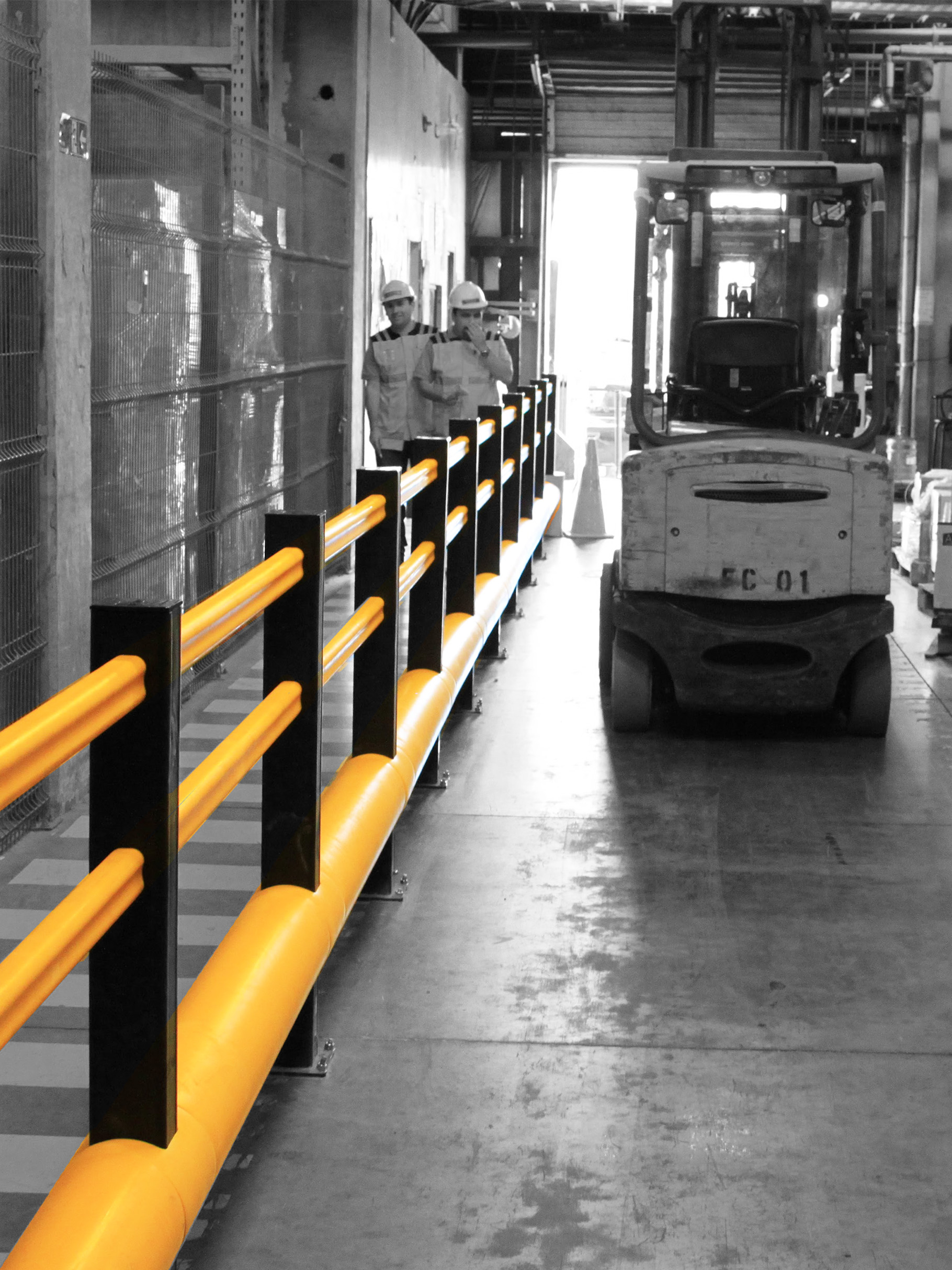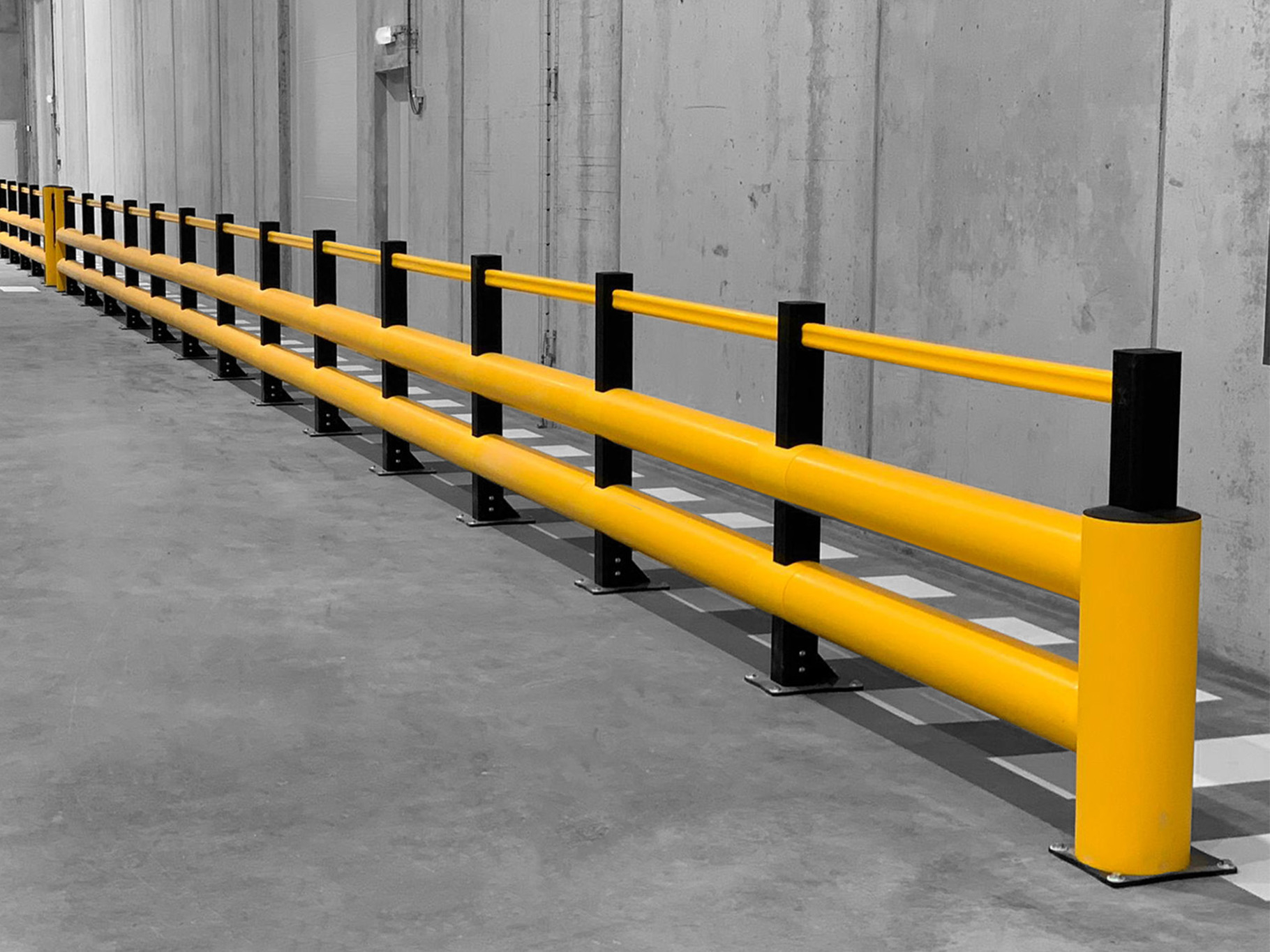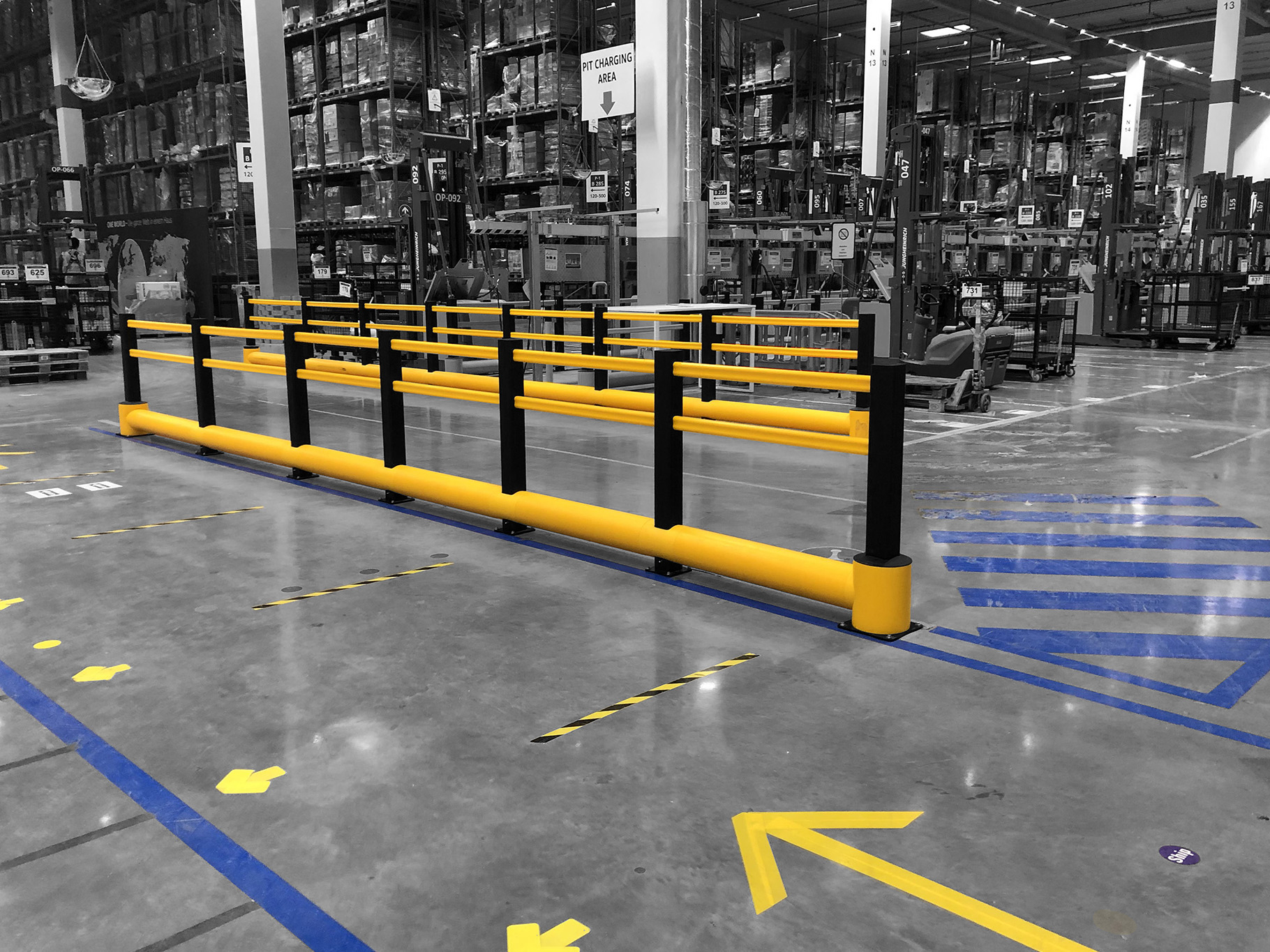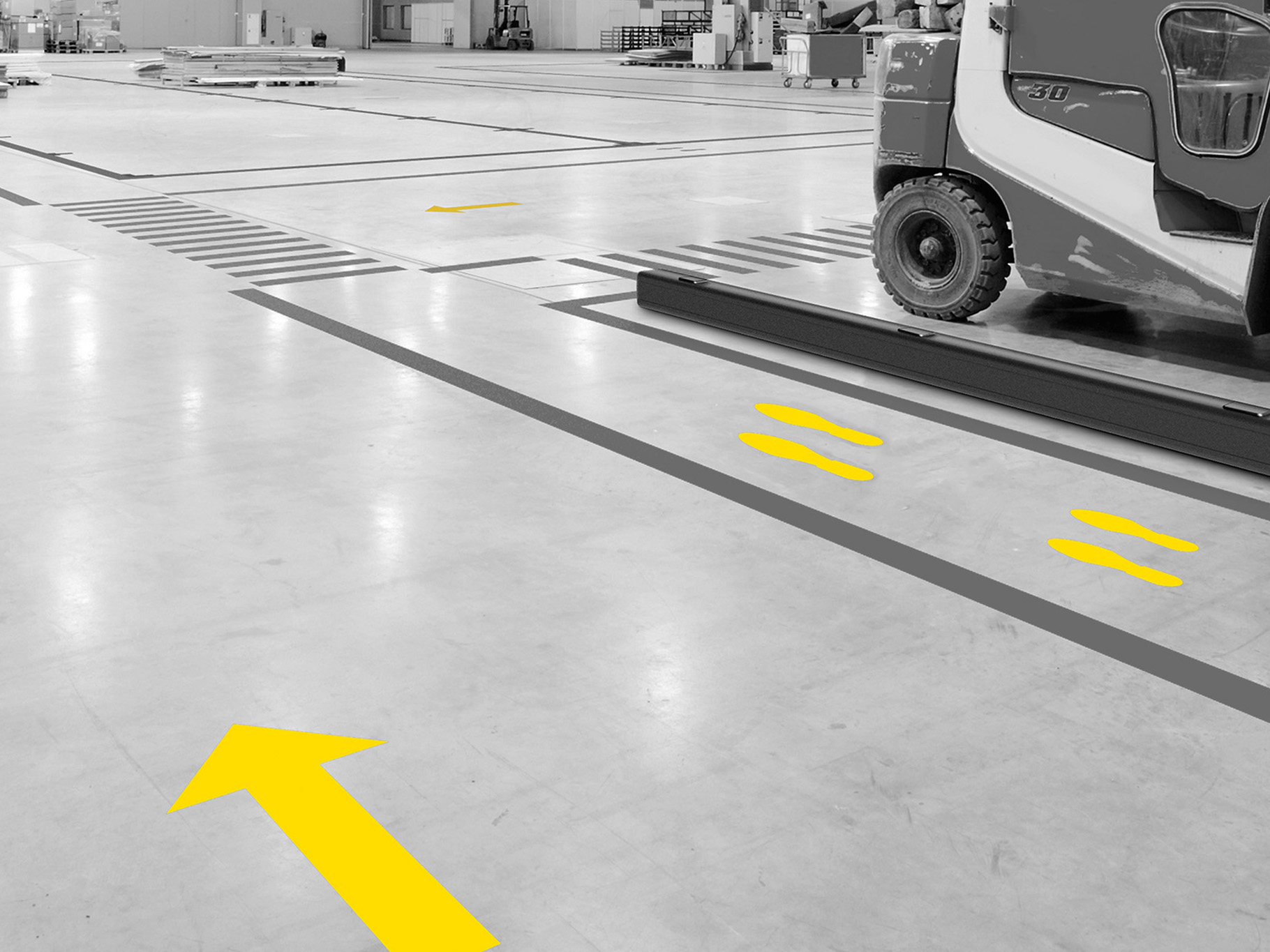SEVEN HIGH-RISK AREAS IN A WAREHOUSE
Like a city, warehouses have their own blind spots and traffic to manage. These blind spots are areas where the risk of an accident is above average. Areas with high forklift traffic are usually the most prone to accidents resulting in property damage or, worse, personal injury. Fortunately, there are ways to improve safety in every high-risk area.
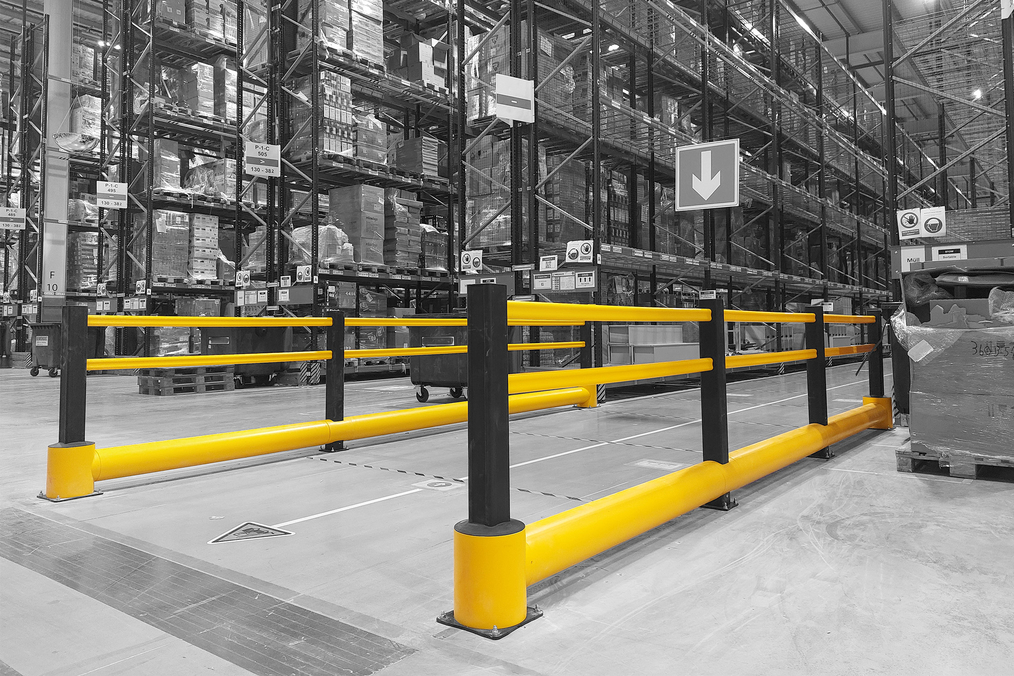
AISLES AND RACKS
Aisles are the veins of the warehouse or distribution center. Typically narrow, they leave little room for unexpected maneuvers. Additionally, pedestrian and forklift traffic lanes are flanked by racks that rise several feet above the ground. Even if the forklift driver can avoid a pedestrian just in time, there is still a chance that the vehicle will hit the racks. This can damage the racking and cause pallets to fall, leading to serious injury or damage.
To prevent pedestrians and forklifts from getting too close to each other, it's beneficial to divide aisles into pedestrian and vehicle lanes. One way to do this is by using marking tape. For example, tape in one color can mark a pedestrian aisle, while another color can mark a forklift aisle. However, physical segregation is more effective at keeping traffic flows separate. For instance, you can use polymer handrails to protect pedestrian areas.
Meanwhile, polymer rack protectors reduce the chances of racks collapsing or getting damaged in a collision. For instance, the RACKBULL® provides an extra buffer if a vehicle hits a rack support. Additionally, the bright color of the easy-to-apply protection increases the visibility of the supports.
To minimize the risk of falling goods, you can protect pedestrians walking along the aisles with an HT TUNNEL. This sturdy polymer structure can be placed around walkways or mounted to the wall.
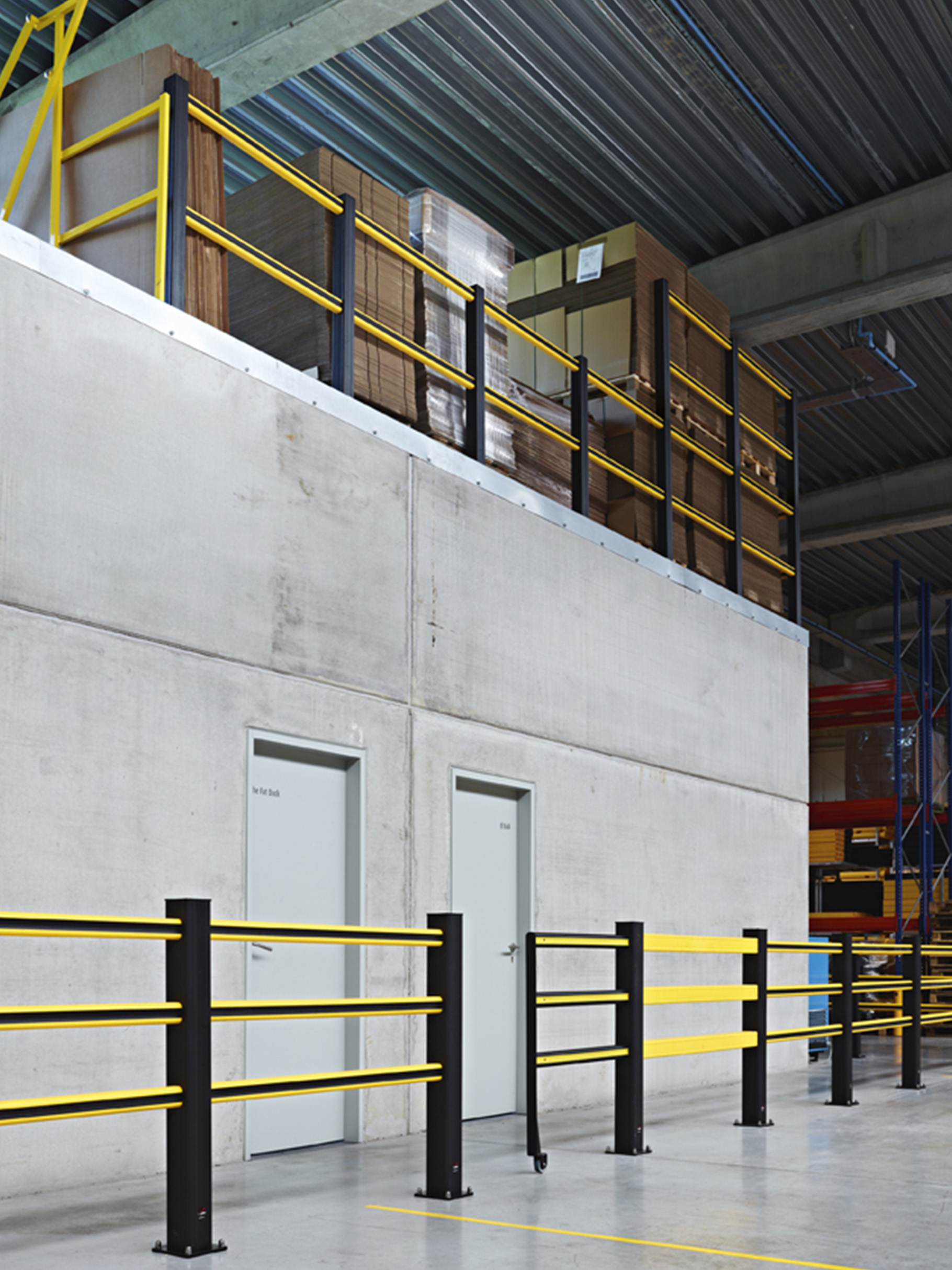
WALKWAYS
A walkway connects one work platform to another or allows pedestrians to access different areas without crossing moving traffic. While the latter is a safety solution in itself, this only applies if the walkway is equipped with necessary protection.
The most common application is the handrail surrounding the walkway, which prevents workers from slipping or falling if they lose balance.
Ensure the structure itself is also protected. Many walkways are held up by columns or posts. In areas with forklift traffic, protect these columns/posts using column protection.
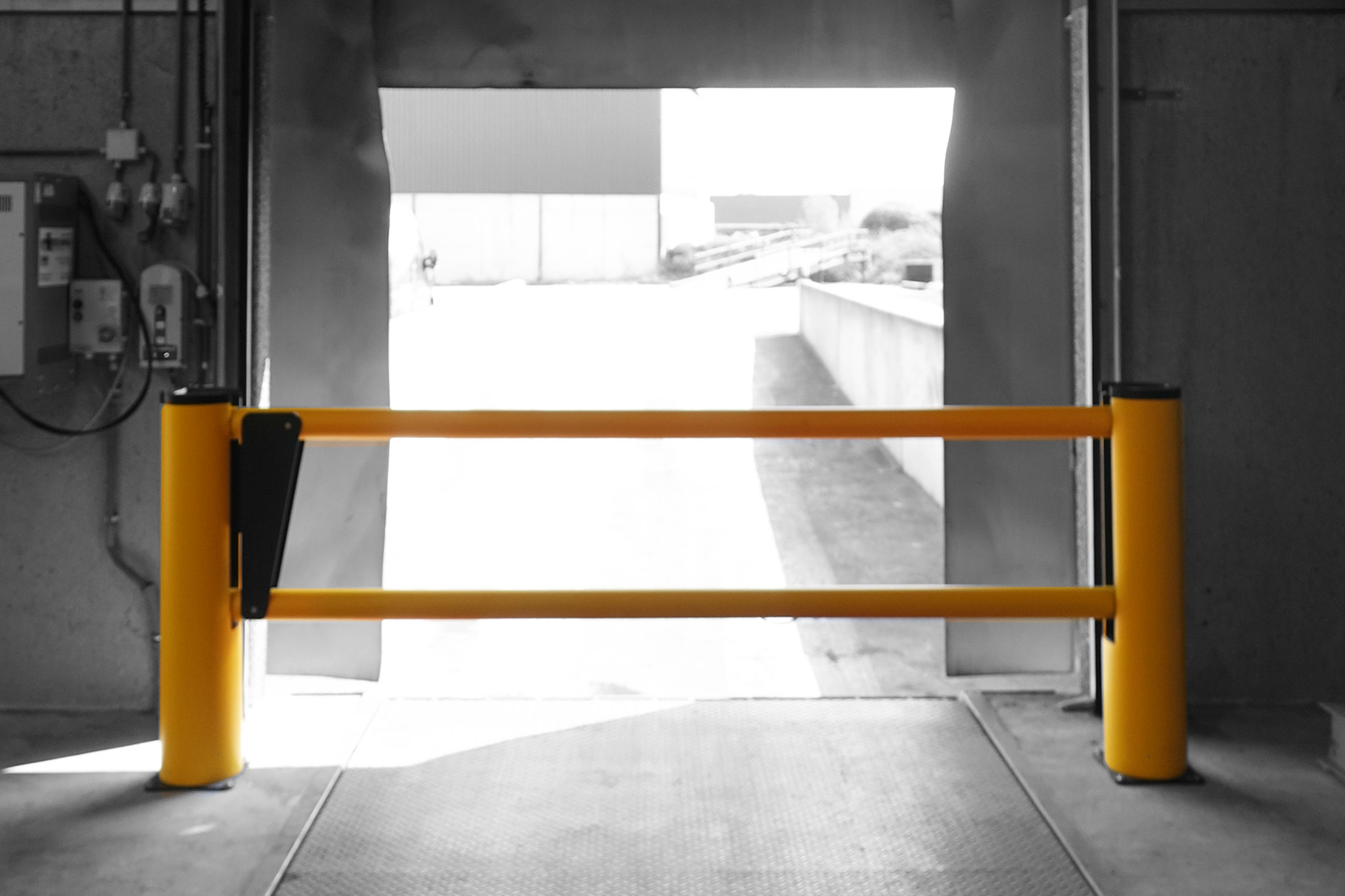
To secure a loading dock, there are two points to consider: visibility and protection.
To enhance visibility, you can place bollards with LED lights on the inside of the dock to help illuminate the cargo area of a trailer or truck. If someone is inside the cargo area, forklift drivers will be able to see them more quickly. Marking tape can be used to clearly demarcate the hazardous area and increase alertness. Providing fluorescent vests to those working in and around the area also helps to increase visibility.
Another measure to ensure physical protection is installing safety barriers. For instance, a safety barrier with a single or double rail can act as a buffer to the dock door if a forklift gets too close to the building. Kick rails can also prevent forklifts and pallet jacks from accidentally colliding with walls or people.
Wheel stops can help prevent external collisions. Boplan offers wheel stops in three sizes. The largest and heaviest version can handle trucks weighing up to 40 tons.
OPEN ON-SITE AREAS
There are also high-risk areas outside the warehouse. Depending on the type of product, goods might be stacked in open areas. Generally, the same risks and safety measures apply as in the warehouse. However, an additional concern should be considered: potential for increased vehicular traffic. Alongside forklifts, trucks and light vans are present on site.
To avoid collisions between vehicles and people, ensure you create a clear traffic plan that demarcates traffic flows, install polymer safety barriers where needed, and place bollards to delineate specific zones or protect infrastructure.
STORAGE SITES FOR HAZARDOUS SUBSTANCES
It's not just the chemical industry that needs to store hazardous materials. In fact, hazardous materials come in all shapes and sizes. They can be toxic, like treatment agents, or flammable, like maintenance products or fuels. These products are found far and wide. Any company that handles or stores hazardous materials must pay special attention to safety measures.
Besides safeguards specifically designed to protect hazardous materials, it's advisable to install safety barriers if forklifts are also used in this area. This prevents hazardous materials from being released or igniting due to a collision or chemical reaction caused by a steering or judgment error.
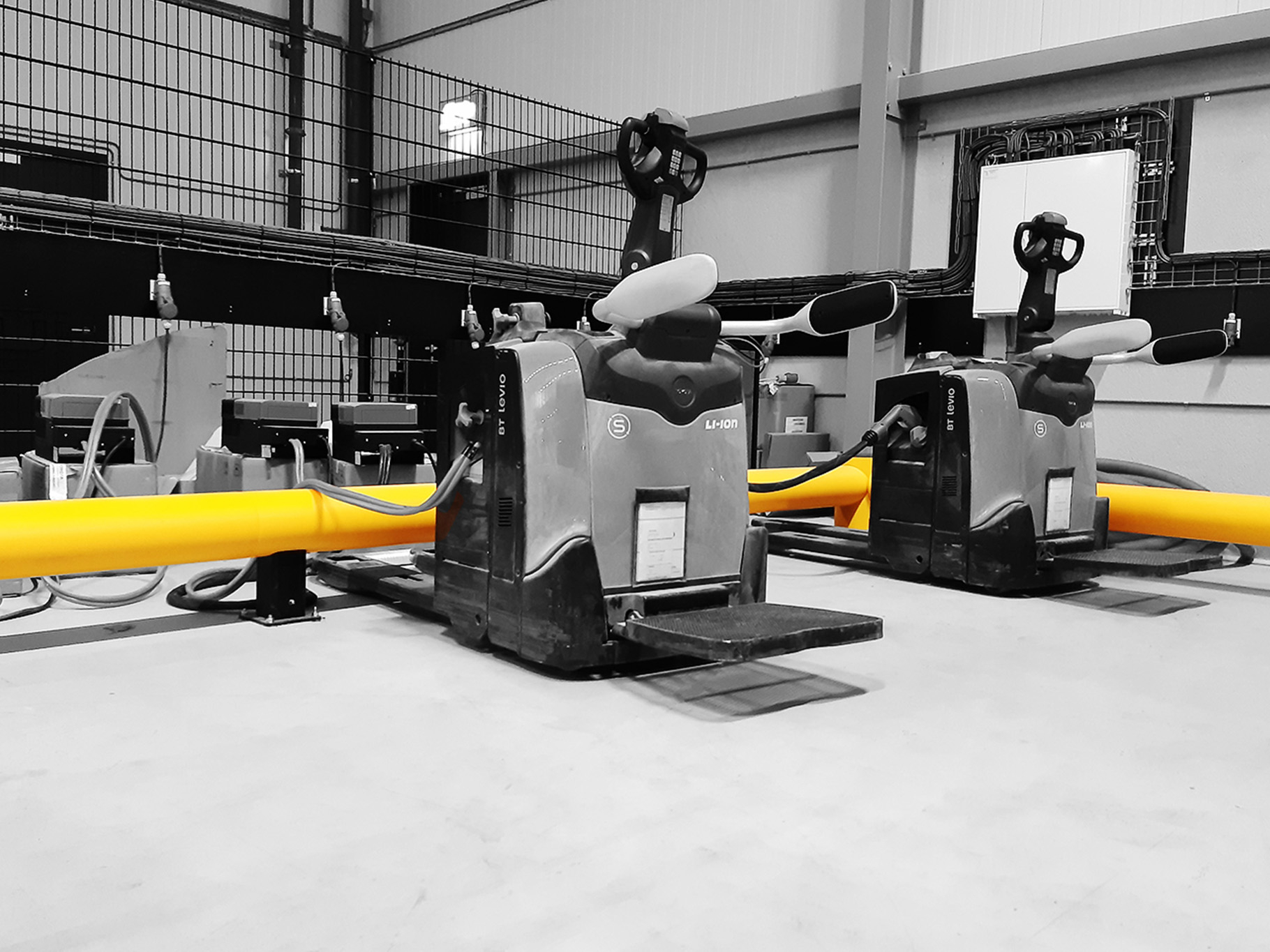
HOW TO IDENTIFY HIGH-RISK AREAS IN A WAREHOUSE
To identify all high-risk areas, conduct a risk assessment – also known as a risk inventory and evaluation (RI&E). A risk assessment is the basis for any prevention policy. Once you have a clear picture of the risk areas in your warehouse, you can focus on improving safety, minimizing the risk of accidents, and avoiding costly repairs to buildings, machinery, or vehicles.
